
ESPAÑOL
Cliente: Emaar Properties
Arquitecto: Skidmore, Owings & Merrill LLP, SOM
Ingeniero Estructural: Bill Baker (SOM)
Tipo: Rascacielos ( Super-Tall ) + 300 metros
Altura: 828 metros (2717 pies)
Estructura: Superestructura de hormigón y acero
Superficie: 464.511 m²
Uso: Mixto (Oficinas, Residencial, Hotel, Mirador de Observación)
Plantas: 163
Gracias al sueño y el gran entusiasmo del Jeque Mohammed Bin Rashid Al Maktoum, Vicepresidente y Primer Ministro de los UAE y Gobernador de Dubai por construir el rascacielos más alto del mundo para esta ciudad, Dubai se ha convertido en un lugar emocionante en pleno desierto adquiriendo gran importancia a nivel internacional, siendo no sólo el destino turístico favorito para millones de personas cada año, sino también la base financiera para numerosas empresas que han trasladado aquí su sede en la actualidad. El prestigioso equipo de Arquitectos Skidmore, Owings & Merrill LLP, SOM, auténticos especialistas en el diseño de rascacielos y numerosos edificios altos en todo el mundo como la Willis Tower y el John Hancock Center en Chicago, o la Torre de Jin Mao en Shanghai, fueron los encargados de diseñar el conocido por todos Burj Dubai durante su fase de construcción. La importante Empresa Constructora Emaar Properties fue la encargada y verdadera artífice que pudo erigir tan grandiosa obra durante nada menos que seis largos años. El rascacielos más alto del mundo se encuentra localizado en Downtown Burj Khalifa, un nuevo distrito rodeado por numerosos edificios altos, el Dubai Mall que cuenta con un enorme Centro Comercial, y un lago artificial con la fuente más grande del mundo.



Adrian Smith, Arquitecto y miembro por aquel entonces del importante Estudio de Arquitectura Skidmore, Owings & Merrill, fue el Arquitecto en Jefe al frente del enorme proyecto del Burj Dubai, aunque posteriormente y antes de su inauguración se le cambiaría el nombre a Burj Khalifa. El enorme edificio está inspirado en la himenocallis, una flor originaria del desierto con seis lóbulos a su alrededor. Gracias a la forma de esta flor, surgió la genial idea de construir una superestructura modular con un núcleo central y tres alas en espiral con retrocesos; de esta forma, recortando los módulos de la torre a diferentes alturas, se consiguió reducir la carga transversal por la acción horizontal del viento pudiendo ganar así mucho más altura. Las plantas del edificio están compuestas por tres alas gallonadas de hormigón armado en forma de Y con 163 plantas en total que se sitúan en torno a un núcleo centralizado de escaleras y ascensores. Se le dio un uso enteramente mixto al edificio para dar cabida a diferentes plantas de un Hotel, Residencias de lujo, Oficinas y un Mirador de Observación que se sitúa en la planta número 124. La decoración interior está inspirada en la cultura local en la que predomina el acero inoxidable y el vidrio de la fachada, el pavimento de mármol travertino y piedra, revestimientos de estuco y alfombras hechas a mano.


Evolución de la arquitectura y la ingeniería desde la famosa Gran Pirámide de Giza en Egipto que data del año 2500 a.C., hasta el recien inaugurado Burj Dubai en 2010 / Evolution of architecture and engineering from the famous Great Pyramid of Giza in Egypt dating from 2500 b.C to the newly opened Burj Dubai in 2010
En el arranque de la estructura, el enorme edificio se apoya en una cimentación de 3,7 metros de altura en la que se vertieron más de 45.000 m³ de hormigón; no obstante, la enorme plataforma de hormigón armado cuenta con un peso de nada menos que 110.000 toneladas. Son 192 pilotes de 1,5 metros de diámetro cada uno los que se entierran a una profundidad de 50 metros y que se conectan a la enorme alfombra de hormigón armado con forma de Y soportando todo el peso de la Megaestructura. Para la construcción del Burj Khalifa se emplearon 330.000 m³ de hormigón y 39.000 toneladas de barras de acero. Un elemento esencial formado exteriormente por pabellones acristalados, el “Podio”, hace de anclaje entre la cimentación y la Megaestructura y ayuda a separar el acceso al edificio mediante entradas bien diferenciadas. La estructura principal está compuesta por un núcleo central hexagonal formado por muros de hormigón armado al que se conectan las tres alas en forma de Y formando 120º entre ellas. Mediante esta estructura modular en espiral con retrocesos a diferentes alturas, se consiguió no sólo crear niveles de terrazas importantes para el bienestar de los ocupantes del edificio sino la de reducir enormemente la fuerza del viento. El edificio cuenta con dos plantas mecánicas cada 30 pisos que se sitúan a modo de anillo en donde se alojan los sistemas de electricidad, depósitos de agua, bombas, y elementos de tratamiento de aire que son esenciales para el funcionamiento del rascacielos. Varias plantas localizadas cada 20 pisos y que están dotadas de aire acondicionado sirven como refugio en caso de un posible incendio. El Burj Khalifa dispone de 8 escaleras mecánicas y 57 ascensores ultrarrápidos que viajan a una velocidad de 10 metros por segundo.

La grandiosa fachada está formada por un sistema de muro cortina a base de 26.000 paneles de vidrio reflectante con textura de aluminio sujetas por una estructura de aluminio y acero. Para hacernos una idea de la enorme superficie cubierta por la piel de vidrio del edificio, se podrían cubrir 17 campos de fútbol con ellas. El revestimiento de la fachada está calculado para soportar las altas temperaturas de calor tan frecuentes en el verano de Dubai. La aguja de terminación, de 200 metros de altura que se construyó desde el interior y que fue subida por medio de un sistema de trepa mediante gatos hidráulicos, forma parte de la propia estructura del edificio, haciendo de este bello rascacielos, el más alto del mundo en la actualidad. Se emplearon 4.000 toneladas de acero estructural para construir esta torre de terminación que también cuenta con un servicio de comunicaciones. El CTBUH Consejo de Edificios Altos y Hábitat Urbano concedió al Burj Khalifa numerosos records del mundo entre los que destacan los 828 metros de altura que lo convierten en el rascacielos más alto del mundo; el edificio con el piso ocupado más alto del mundo; el record de pisos con 163; y el mirador de observación llamado Observation Deck situado en la planta 124 como el segundo más alto del mundo por detrás del Shanghai World Financial Center de Shanghai, China. El Burj Khalifa se ha convertido en un icono indudable y en todo un símbolo para los Emiratos Árabes Unidos siendo el centro de todas las miradas.
ENGLISH
Client: Emaar Properties
Arcuitect: Skidmore, Owings & Merrill LLP, SOM
Structural Engineer: Bill Baker (SOM)
Type: Skyscrapers (Super-Tall) + 300 meters
Height: 828 meters (2717 feet)
Structure: concrete and steel superstructure
Area: 464,511 sq. m
Use: Mixed (Offices, Residential, Hotel, Mirador Observer)
Floors: 163
Thanks to the dream and the great enthusiasm of Sheikh Mohammed Bin Rashid Al Maktoum, Vice President and Prime Minister of UAE and Ruler of Dubai to build the tallest skyscraper in the world to this city, Dubai has become an exciting place in the desert becoming great international importance, being not only a favorite tourist destination for millions of people every year, but also the financial base for many companies that have moved their headquarters here today. The prestigious team of architects Skidmore, Owings & Merrill LLP, SOM, real specialists in the design of numerous skyscrapers and tall buildings around the world as the Willis Tower and the John Hancock Center in Chicago, or Jin Mao Tower in Shanghai were responsible for designing the Burj Dubai known to all during its construction. The major Emaar Properties Construction Company was responsible and true artist who could erect such a great work for no less than six long years. The world's tallest skyscraper is located in Downtown Burj Khalifa, a new district surrounded by many tall buildings, the Dubai Mall has a huge shopping center, and an artificial lake with the largest fountain in the world.

Adrian Smith, architect and member of the important back then Architecture Studio Skidmore, Owings & Merrill, was the Chief Architect in front of the huge project of Burj Dubai, but later and before his inauguration would change the name to Burj Khalifa. The huge building is inspired by the himenocallis, a flower native to the desert with six lobes around it. The shape of this flower, came the brilliant idea of building a modular superstructure with a central core and three wings backward spiral, thus cutting the modules of the tower at different heights, the load was reduced cross-sectional horizontal wind action can win so much height. The floors of the building are composed of three wings galloned concrete Y-shaped with 163 plants in total which are situated around a central core of stairs and elevators. She was given a mixed use of the building entirely to accommodate different floors of a hotel, luxury residences, offices and an observation lookout that sits in the plant number 124. The interiors are inspired by local culture which is dominated by stainless steel and glass facade, the travertine marble floor and stone, stucco siding and handmade rugs.


At the start of the structure, the huge building rests on a foundation of 3.7 m height at which spilled more than 45,000 m³ of concrete, however, the huge concrete platform with a weight of no less 110,000 tonnes. 192 piles are 1.5 meters in diameter each that are buried to a depth of 50 meters and are connected to the vast carpet of concrete Y-shaped bearing the full weight of the Megastructure. For the construction of Burj Khalifa were used 330 000 m³ of concrete and 39,000 tonnes of steel bars. An essential element formed externally glazed pavilions, the "Podium" anchor made between the foundation and helps separate Megastructure and access to the building by distinct entries. The main structure consists of a hexagonal core formed by reinforced concrete walls that connect the three wings forming Y-shaped 120 ° between them. With this modular spiral kicks at different heights, was achieved not only create level terraces important to the welfare of the occupants of the building but to greatly reduce the strength of the wind. The building has two mechanical floors every 30 stories that lie as a ring which houses the electrical, water tanks, pumps, and air treatment elements that are essential to the functioning of the skyscraper. Several plants located every 20 floors and are equipped with air conditioning provide shelter in case of a possible fire. The Burj Khalifa has 8 lifts and 57 escalators ultrafast traveling at a speed of 10 meters per second.

The grand facade consists of a curtain wall system on the basis of 26,000 glass panels, textured aluminum reflective subject for an aluminum and steel. To get an idea of the vast area covered by the glass skin of the building, would cover 17 soccer fields with them. The surface of the facade is constructed to withstand high heat temperatures so frequent in the summer of Dubai. The needle end, 200 meters high, was built from the inside and that was uploaded through a system of hydraulic jacks climb through is part of the structure of the building, making this beautiful skyscrapers, the tallest world today. We used 4,000 tons of structural steel to build this tower of finish that also has a communications service. The CTBUH Council on Tall Buildings and Urban Habitat gave the Burj Khalifa numerous world records among which are 828 meters high, making it the world's tallest skyscraper, the building with the highest occupied floor of the world record Flats with 163, and the viewpoint of observation called Observation Deck located on the ground 124 as the second highest in the world after the Shanghai World Financial Center in Shanghai, China. The Burj Khalifa has certainly become an icon and a symbol for the United Arab Emirates being the center of attention.
"Images Burj Khalifa, Dubai, UAE"
Images 2-4-6-7-9 "Copyright © Burj Khalifa", Web official
Images 3 "Copyright © Emaar Properties", Web official
Image 5-8 "Copyright © Exmam", Photostream Flickr
Image 1 "Copyright © William Tung", Photostream Flickr
Image 10 "Copyright © Michael R. Cruz", Web
"Text" Copyright © José Miguel Hernández Hernández
Editor, Escritor y Fotógrafo de Arquitectura /
Publisher, Writer and Architectural Photographer
Todos los derechos reservados / All rights reserved
http://www.jmhdezhdez.com/
Others works in Dubai / Otras obras en Dubai
O-14
Dubai, UAE United Arab Emirates
Reiser+Umemoto
Rose Rotana Tower
Dubai, United Arab Emirates
Khatib & Alami
Burj Al Arab
Dubai, United Arab Emirates
Tom Willis Wright
Others Skyscrapers in the world / Otros Rascacielos en el mundo

Taipei 101
Taipei, Taiwan
C. Y. Lee & Partners
Shanghai World Financial Center
Shanghai, China
Kohn Pedersen Fox & Associates
Petronas Twin Towers
Kuala Lumpur, Malaysia
Cesar Pelli & Associates
Willis Tower
Chicago, Illinois, USA
Skidmore, Owings & Merrill LLP, SOM
MUY IMPORTANTE!!! VERY IMPORTANT!!!
Deja tu comentario sobre este reportaje al pie de este post donde dice "Publicar un comentario en la entrada"; me será de gran valor para seguir mejorando este sitio web y te contestaré con la mayor brevedad posible... Muchas gracias!
No obstante, si te ha resultado interesante este reportaje y también el Blog en general, por favor, no dudes en hacerte Fan de la página de Fans del Blog de José Miguel Hernández Hernández en Facebook aquí
Nota importante: Una vez que hayas entrado en la página de Fans del Blog en Facebook, con sólo hacer click en el botón de "Me gusta", a partir de ese momento estarás al tanto de todos los nuevos reportajes interesantes relacionados con la Arquitectura y la Ingeniería que aquí se vayan publicando para no perder ningún detalle...
También puedes suscribirte por e-mail (te llegaría un e-mail con el enlace de cada artículo en el mismo momento en que sea publicado), o bien también puedes seguir el Blog a través de Twitter aquí
Nos vemos en el Blog!
Leave a comment on this story at the bottom of this post where it says "Post a comment in the entry", I will prove invaluable to further improve this website and I will answer as soon as possible .. . Thank you very much!
However, if you this story was interesting and the blog in general, please do not hesitate to make Fan Fans of the Blog page José Miguel Hernández Hernández on Facebook here
Very important: Once you enter the page Blog fan of Facebook, simply click on the button Like "From that moment you are aware of all new interesting stories related to the Architecture and Engineering are published here to avoid losing any detail ...
Can also subscribe by e-mail (I would e-mail with a link to each item in the same time it is published), or you can follow through Blog Twitter here
See you at the Blog!
HOME GEOGRAPHY ARCHITECTURE ENGINEERING SKYSCRAPERS
BRIDGES BUILDINGS TOWERS PUBLICATIONS ABOUT ME CONTACT
Copyright © José Miguel Hernández Hernández
Editor, Escritor y Fotógrafo de Arquitectura /
Publisher, Writer and Architectural Photographer
http://www.jmhdezhdez.com/
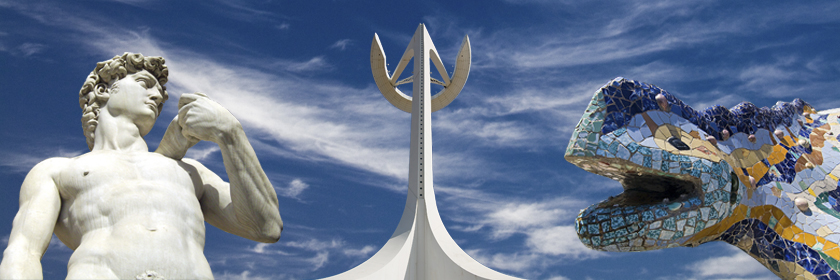









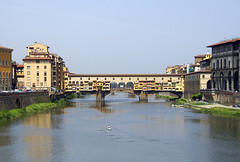




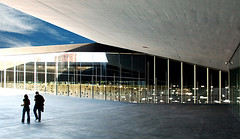



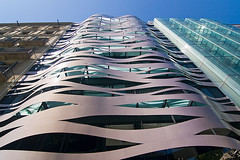



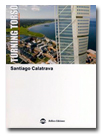

No hay comentarios:
Publicar un comentario